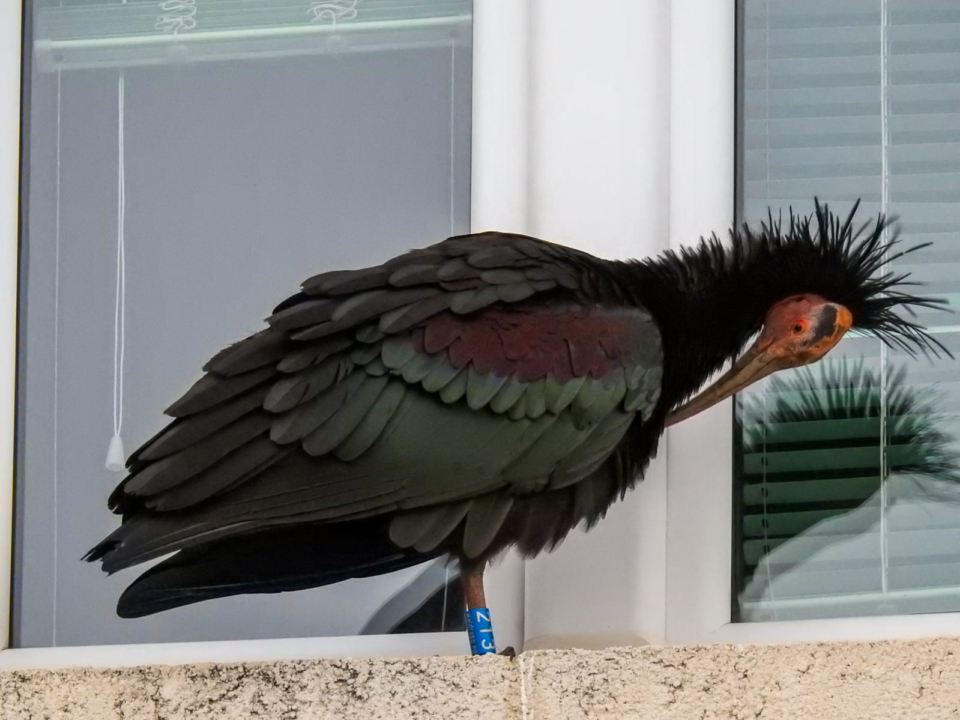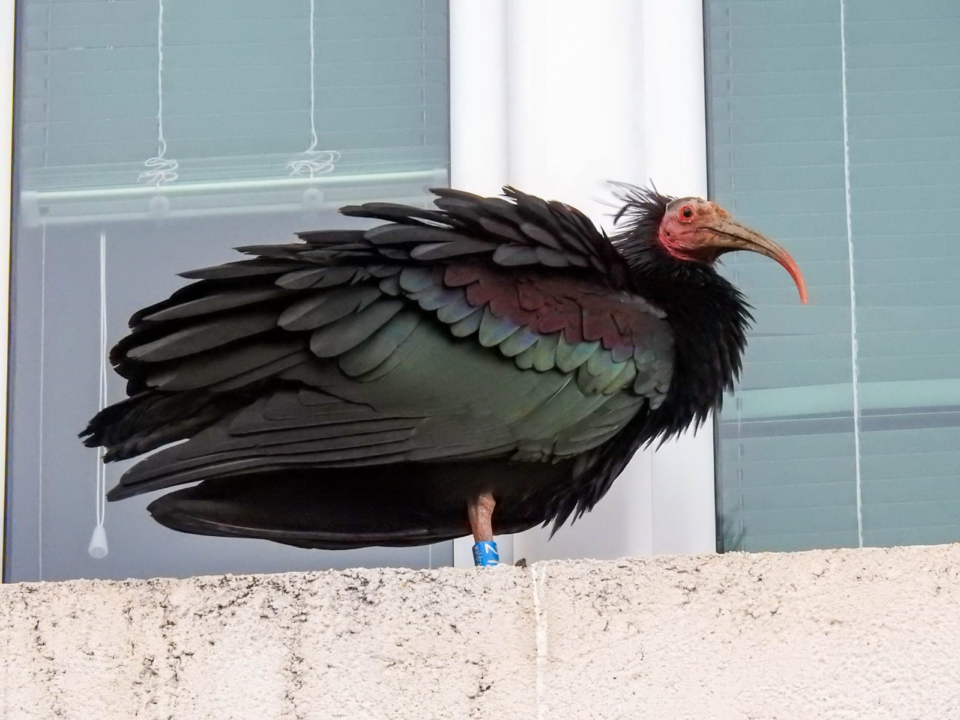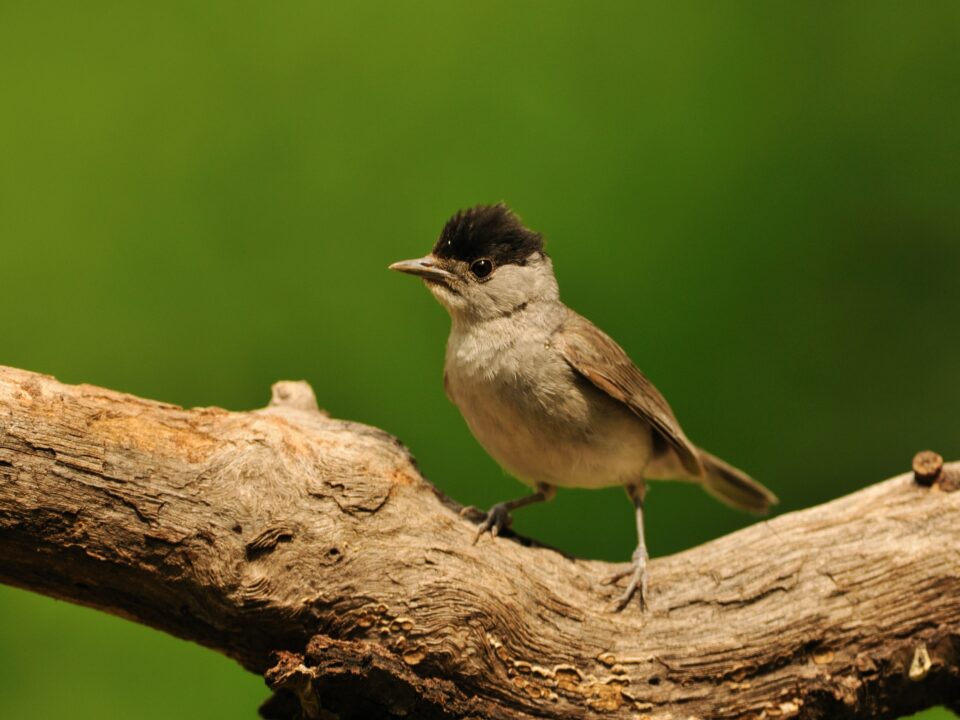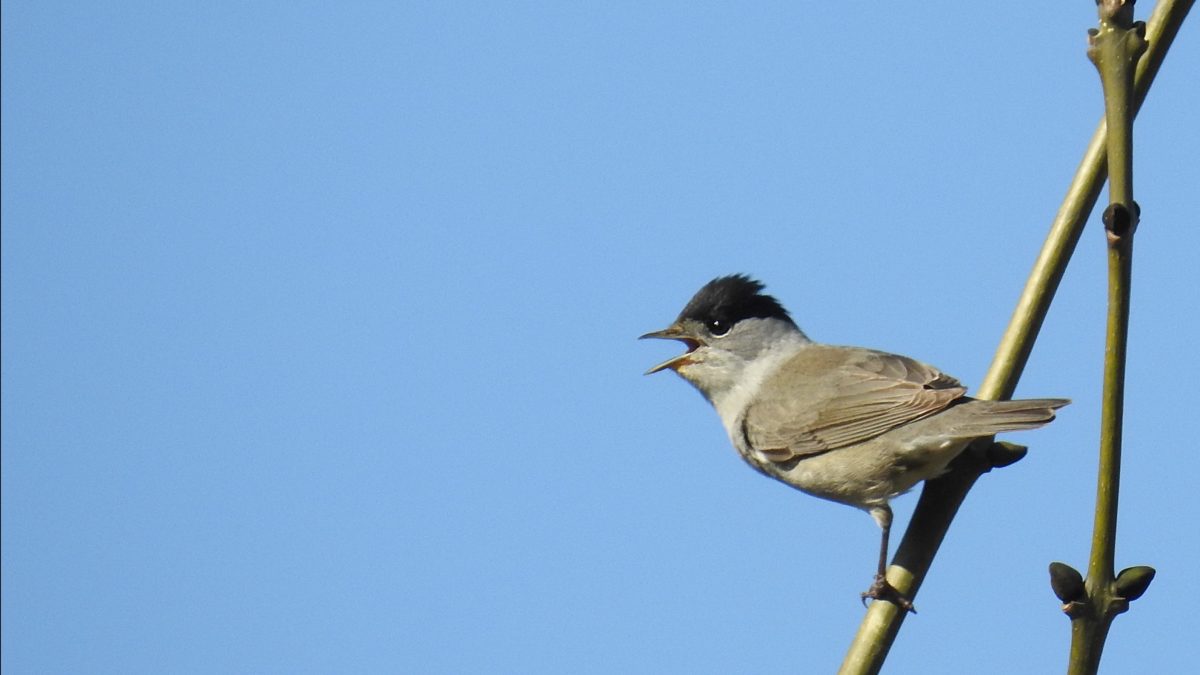
Blackcap © Pete Beard
How YOU can stop birds hitting your windows during autumn migration
Our #MagnificentBlackcap is migrating as we speak! On its journey, it will fly over cities and countryside, land and water, and will make several rest stops along the way. But as it passes through urban areas, an invisible threat looms all around it – our windows. Studies have shown that migratory birds are more likely to strike glass than resident ones, even when they are not migrating. This may be because resident birds can learn the location of glass structures and avoid them, whereas to migratory birds, the landscape is less familiar.
You may wonder how it’s possible that birds cannot see windows, when to us it is obvious there is something in the way. It’s not because they have bad eyesight – quite the opposite. Birds’ eyes are on the sides of their heads, giving them extremely wide-angle vision – sometimes a completely 360 ° view, which is extremely useful in spotting approaching predators, rivals or potential mates. However, this means that a comparatively small area of their vision is covered by both eyes, making it hard to focus on the scene directly in front of them.
Because of this, they may see the view on the opposite side of the window and think they can fly right through. Or, they may see nearby trees reflected in the glass, and mistake it for a completely new area to explore. Furthermore, until relatively recently, birds never needed to be able to see glass. They evolved for millennia in a world without glass, and it’s only in the past few centuries, with the growth of human technology and the expansion of towns and cities, that it has become a problem.
Another, less well-known issue, is unnatural light. This is especially hazardous for birds that migrate at night, and use the light from the moon and stars to help them navigate. These birds may become disoriented by artificial light and lose their way, or fly towards it and collide with the glass. This effect is even worse in poor weather such as fog, when visibility is low.
Our partner, the Czech Society for Ornithology (CSO), has featured the Blackcap on their logo since the 1930s, and is very proud to offer a home to this iconic species, which nests in the Czech Republic in large numbers. However, a million birds a year are estimated to die from hitting glass in the Czech Republic alone. CSO works hard to raise awareness of this urgent issue among the general public. With the help of their passionate volunteers, they go into schools, working with teachers to educate children about nature and have fun making their windows safe for birds.
CSO has also managed to make more than 120 bus stops across the country bird-safe. Volunteers inspected and rated nearly 13,000 bus stops, flagging dangerous ones on the CSO website. Using this evidence, CSO asked the authorities to make adjustments to these structures. Schools then ran a competition to see who could create the best-decorated bus stops, with some beautiful results.
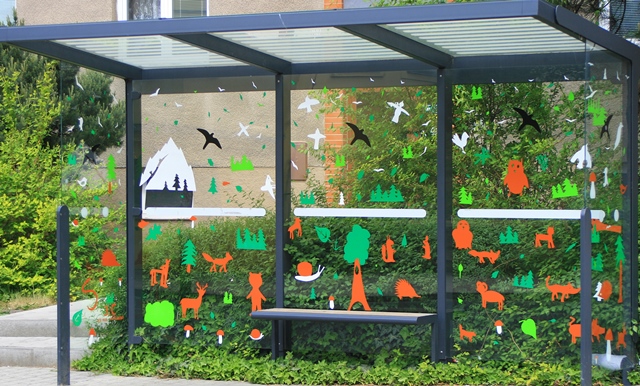
So how can YOU make your windows bird-safe? Here are some simple tips:
1. Put stickers on the glass to show birds that there is something in the way. These stickers can come in many shapes, styles, colours or sizes, and it’s easy to buy them or make your own. However, avoid black stickers, because windows often look dark from the outside, so black silhouettes do not create enough contrast. In fact, imprints of bird collisions have often been found right beside black stickers. Instead, go wild with colour – especially red and orange shades, which have been proven to be more effective than blue and green. If you can, make sure these stickers are placed on the outside of the window, rather than the inside. This will help to break up reflections on the surface of the glass.
Some companies sell silhouettes of birds of prey which they claim scare off smaller birds. Unfortunately, these have not been proven to work. Similarly, transparent ultra-violet stickers which are only visible to birds have had mixed results.
2. Make sure there are many stickers on each window, placed no further than 10-15cm apart. Birds are used to navigating small spaces between branches, so use the “Palm Area Rule” – if the gap is bigger than the palm of an adult’s hand, a bird may still attempt to fly through. You can even buy transparent tape to stick across your window, which has dots the ideal width apart.
3. Put in net curtains or venetian blinds – these let light in, but also make your windows visible to birds. Similarly, make sure you close your curtains, blinds or shutters when you go out.
4. Close your curtains at night and switch your lights off when you don’t need them – not only is this good for the environment (and your bank account), it also prevents nocturnal birds from getting confused and striking the glass. Even skyscrapers have started doing it: the Post Tower in Bonn, Germany switches its lights off every night during migration periods.
5. If a bird still hits your window and is lying motionless, it may not be dead, but merely stunned. Put it in a darkened box for an hour, and it may calm down and recover enough to fly back out into the world.
There’s still plenty of time to make your windows safe for migratory birds this autumn – now is the time to become the bird hero you’ve always wanted to be!
Help us keep the blackcap safe along every step of its journey.

